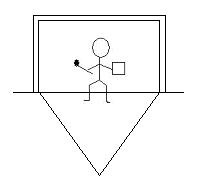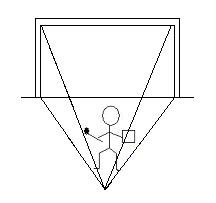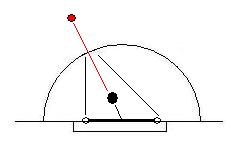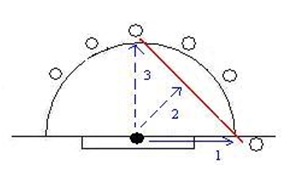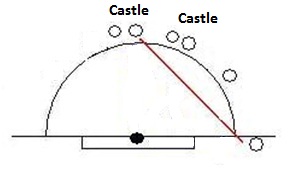Unlike a forward or outfield player who is supposed to start young and impress early on to break into the first eleven, a goalkeeper is more of a slow burner, having to bide their time until the opportunity for such action presents itself. This reflects the nature of a goalkeeper; using their experience to analyse the game play in front of them and react accordingly to break up scoring opportunities and deny the opposition their scoring chances. As a result, it is important for a goalkeeper to make the most of their game experience going into their next game, or throughout the season, to play a more prominent role in the defence.
Experience matters
Experience is important in anything really, work, life or driving perhaps! And goalkeeping is no different and the goalkeeper’s job is driven by experience. The depth of game experience at a given level can have an important influence on your chances of developing and playing to your optimum best. Experience of games where you are up against it often helps calm the nerves in a tight game that will have a decisive impact on your team’s table positioning, or in a top of the table clash, for example. Not only does experience have an effect on how you perform mentally, but also helps you analyse games and dissect your performances in tactical awareness, so that you can breakdown a scoring opportunity firsthand in the next game; such as positioning against shots, or when to come off your line against an attack. Able to expect where a shot is headed, or where and when a player will break through onto the D and your goal, will help you make important interceptions or points winning saves.
The importance of experience
Game experience is more invaluable than any training session or coached session that you can do. You can practise and practise any given scenario, but if you cannot put it to work in a game, it hasn’t come to fruition. This is obviously often done to mental strength and personal confidence, but also an ability (or lack of) to ‘read’ the game in front of you and diagnose the potential opportunities for a scoring chance during the game. Some goalkeepers are great at performing well in training, but this does not translate to game performances. Like in life, some people are great at the theory but struggle to put it into practise in reality! To be able to develop to the highest level, you need to be pushing yourself to get this kind of experience and more so, to be able to pull it off in games.
You may be getting a lot of training and practising with a higher level squad, but you are not getting game experience. The lack of regular games can affect your chances of improving or developing as a goalkeeper, which is why goalkeepers in footie often loan out their reserve goalkeepers to a lower team for the chance for them to get game experience rather than ‘riding the pine’. This is obviously more difficult in hockey as there are no loans systems, but in a bigger club playing for the second eleven and biding your time is just as useful! This is why young goalkeepers getting high level game experience early on is so invaluable in some ways, as they are acclimatising to the elite level and exposing themselves to more testing and challenging games, rather than simply bench warming or playing down a level. A goalkeeper with more experience at this level is going to have a longer career and beat off other competition as they are already on the right track to getting a shot at the highest level. The more you test yourself during games, the more likely you are to develop more quickly, if your confidence stays intact!
Working off past experiences
The most obvious time in your playing career when you cannot rely on experience, would be when you start. In this case, you are basing your play off of each game experience, slowly but surely getting used to angles, positioning, depth, and reactive saves. But moving up the levels and playing at a higher speed and facing different shots or routines and play styles, you again build up an experience to base your play off, developing as a result. That aside, experience counts for a lot in goalkeeping, with you able to draw on previous experiences and tactical knowledge to counter attack an opposition’s assault on your D, commanding the defence to react appropriately or when to come off your line for a smart interception.
Like the wise old owl, the veteran keeper can draw on all of the games they have played to help them in their ability to dominate their D and command their defenders to increase their chances of low scoring (or conceding!) games. A younger goalkeeper might be able to get to shots more quickly than their older counterpart, but the older keeper has the advantage of countless games that offer them a wealth of experience for them to pick up the opposition in their in-game analyse of the opposition’s attacks. As they get more experience, the shot stopping abilities and athleticism start to combine with this ability to know when to do what or be where, at the right time, during a game and the goalkeeper will start to be more of an incredibly dominant force in the games they play. Kind of why a goalkeeper takes time to mature and peak later on in life!
Getting experience
The simplest and most obvious way to get game experience is to just get out there and play! Even if it as a lower level than you want or expect, you are still getting chances to build your experience and confidence in your abilities. Summer hockey in the off-season over in the UK is great for this, where there is an opportunity to get starts when other goalkeepers may be relaxing or off on holiday and such, and you can also prove yourself to other members of the club who might play for a higher team. ‘Doubling up’, often more possible when playing for a larger club who are without regular goalkeepers, is another way of doing this, playing more than once at a weekend.
Use your experience!
Ultimately, the crux of experience is how you make use of it when it comes to game time. By being able to ‘read’ the game better, you can have a greater impact on the games that you play. Make use of your experiences to think through how you should have reacted better when you allowed such and such a goal, so that you don’t make the same mistake twice or in the next game! You can be the most athletic and acrobatic awesome goal defying shot stopper, but if you don’t have a good, grounded level experience to base your understanding of how plays work or develop as you ‘read’ the opposition, then you are consequently going to make timely saves or interceptions.
